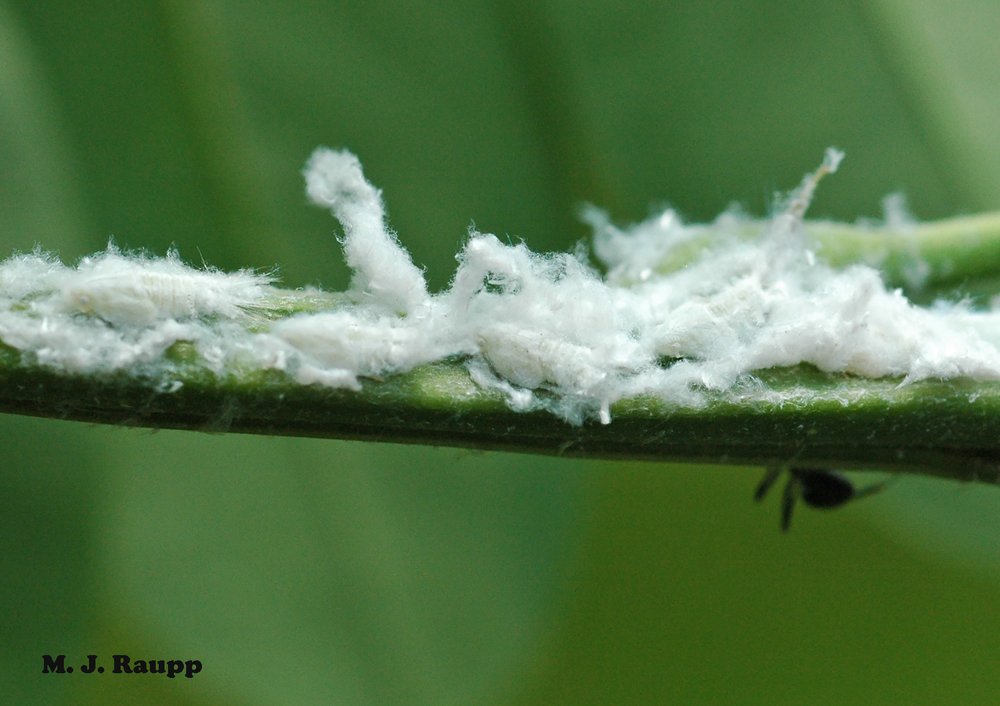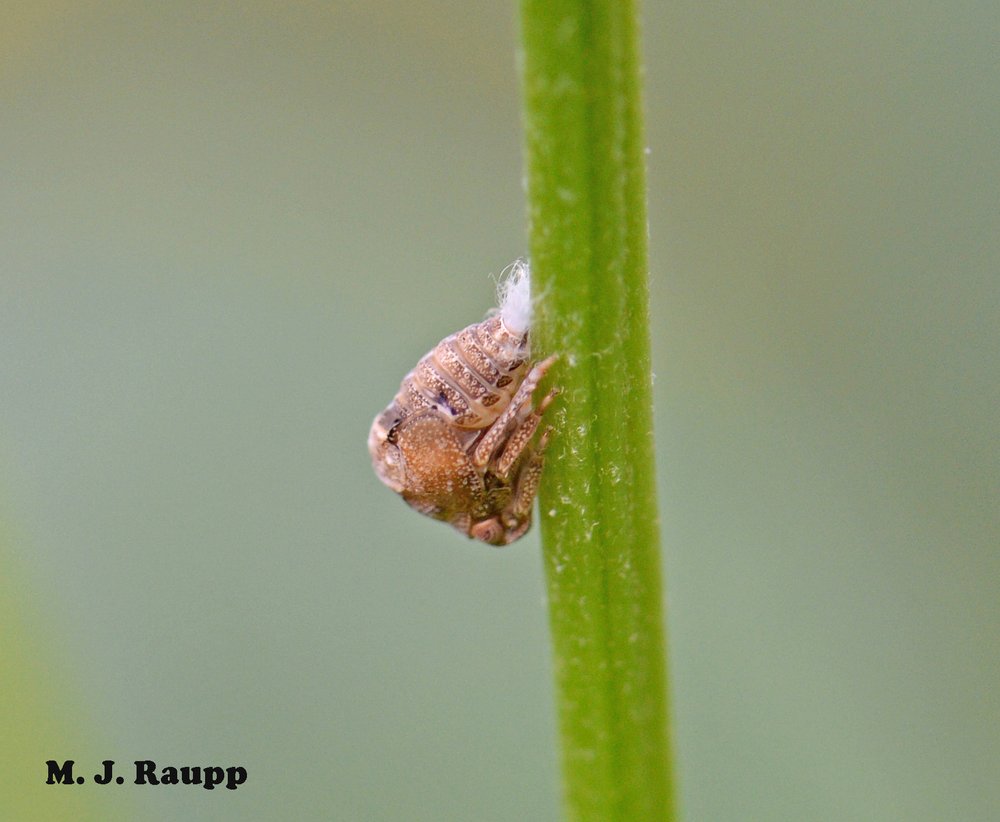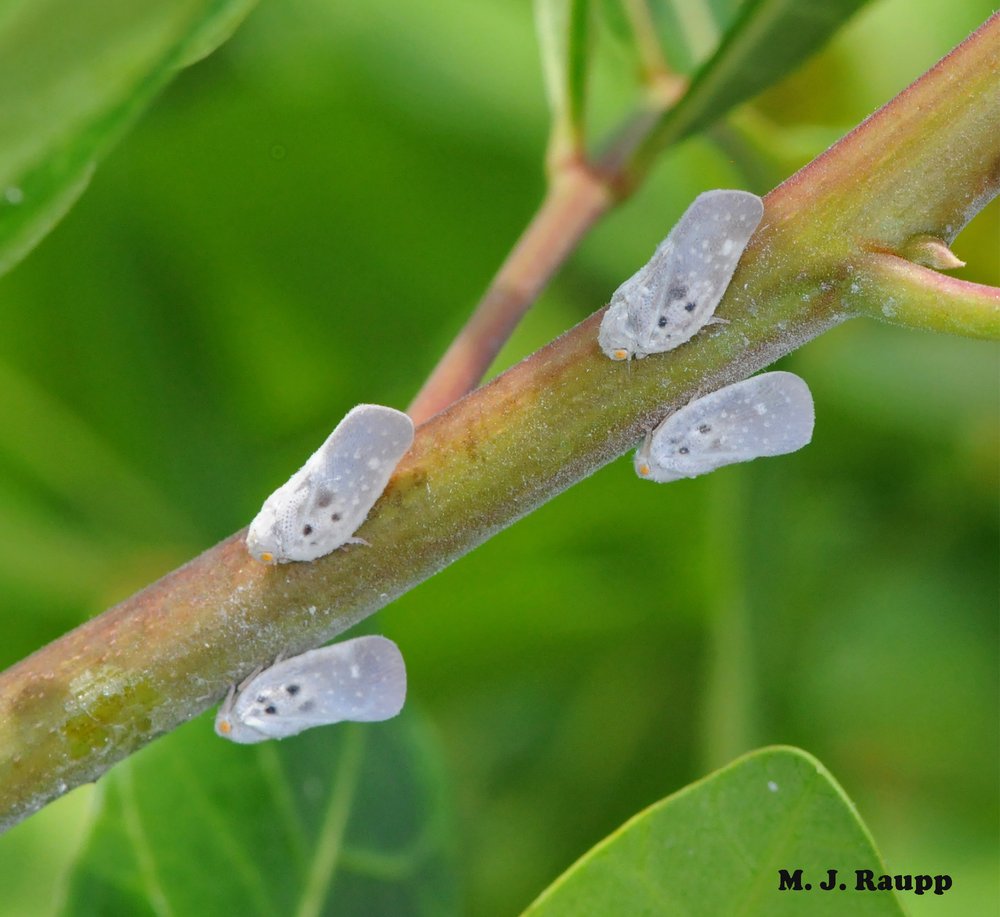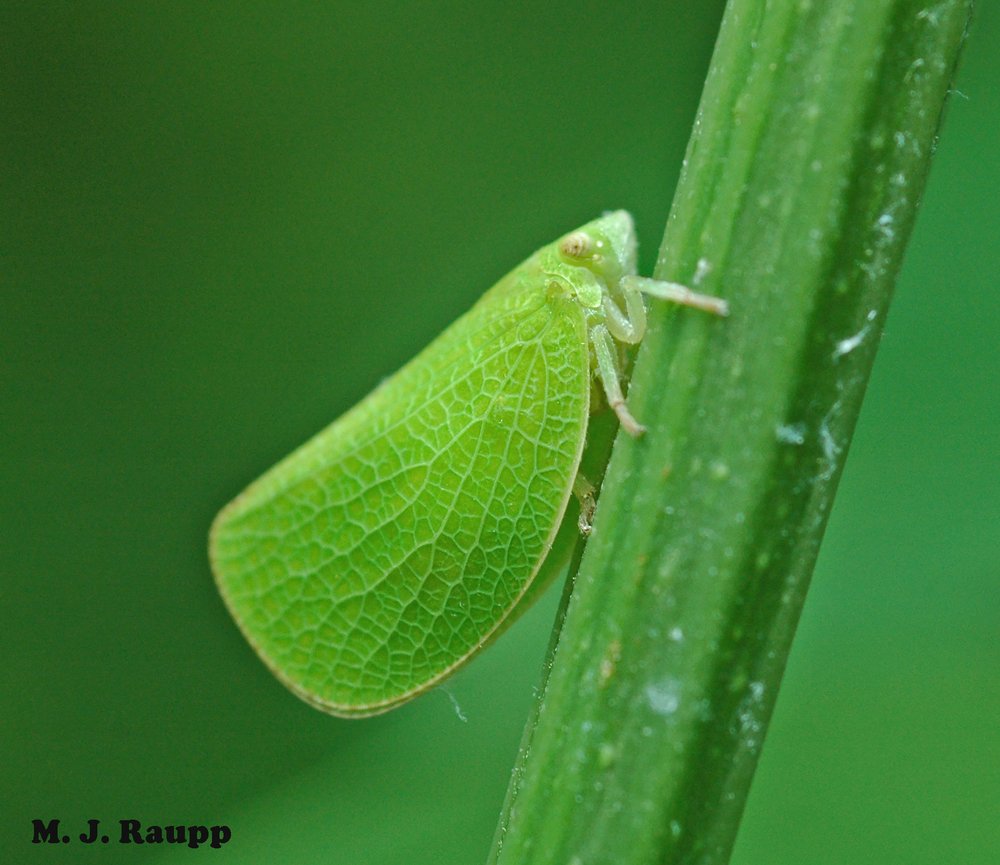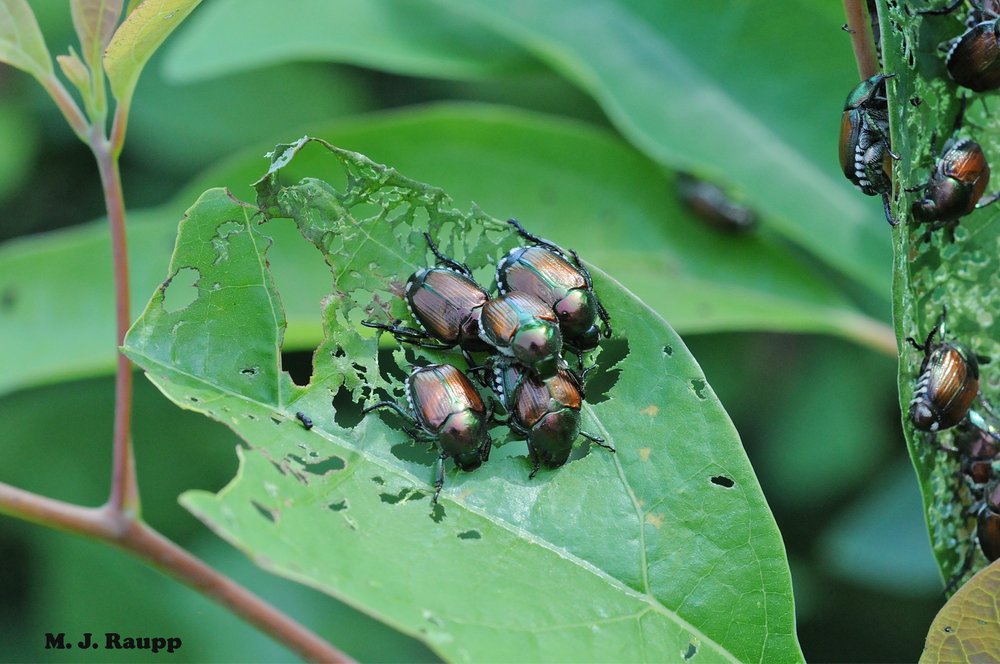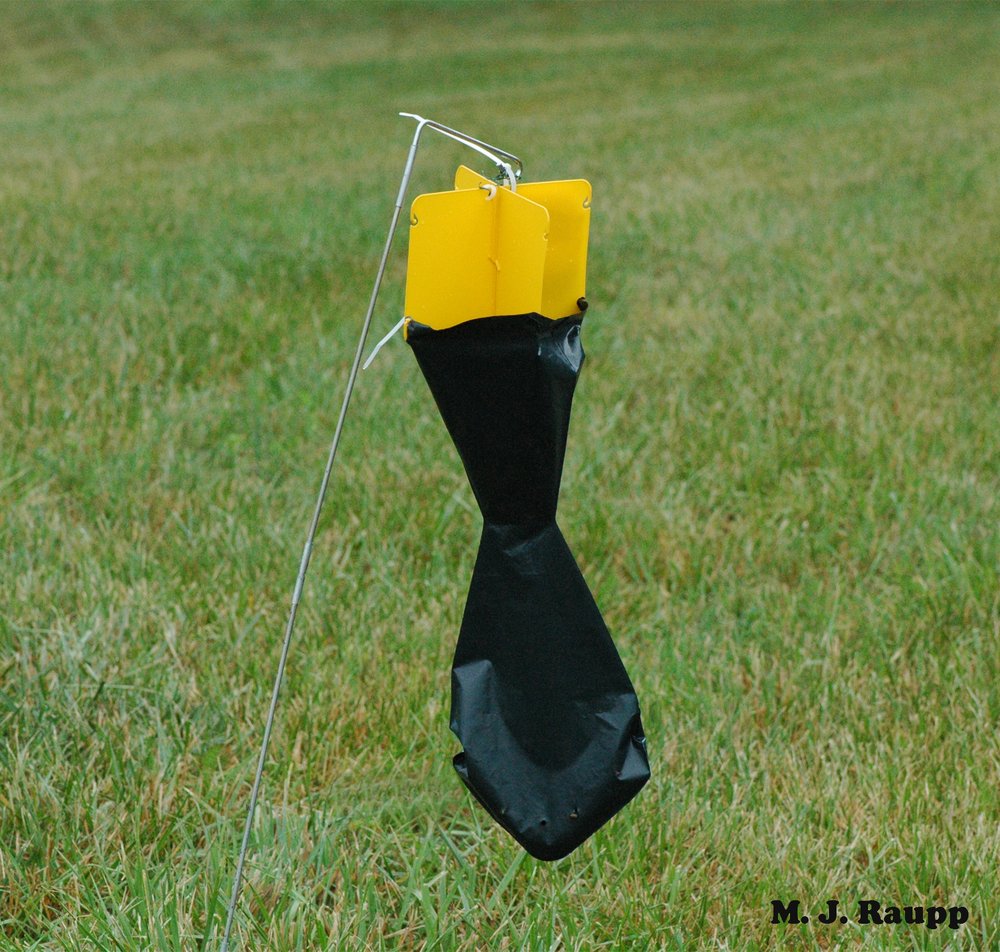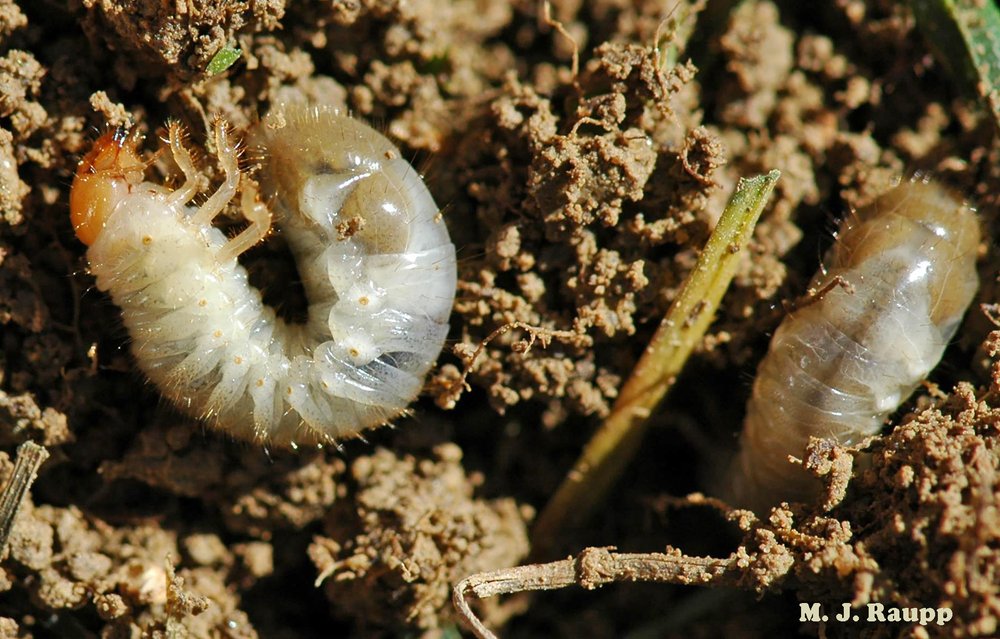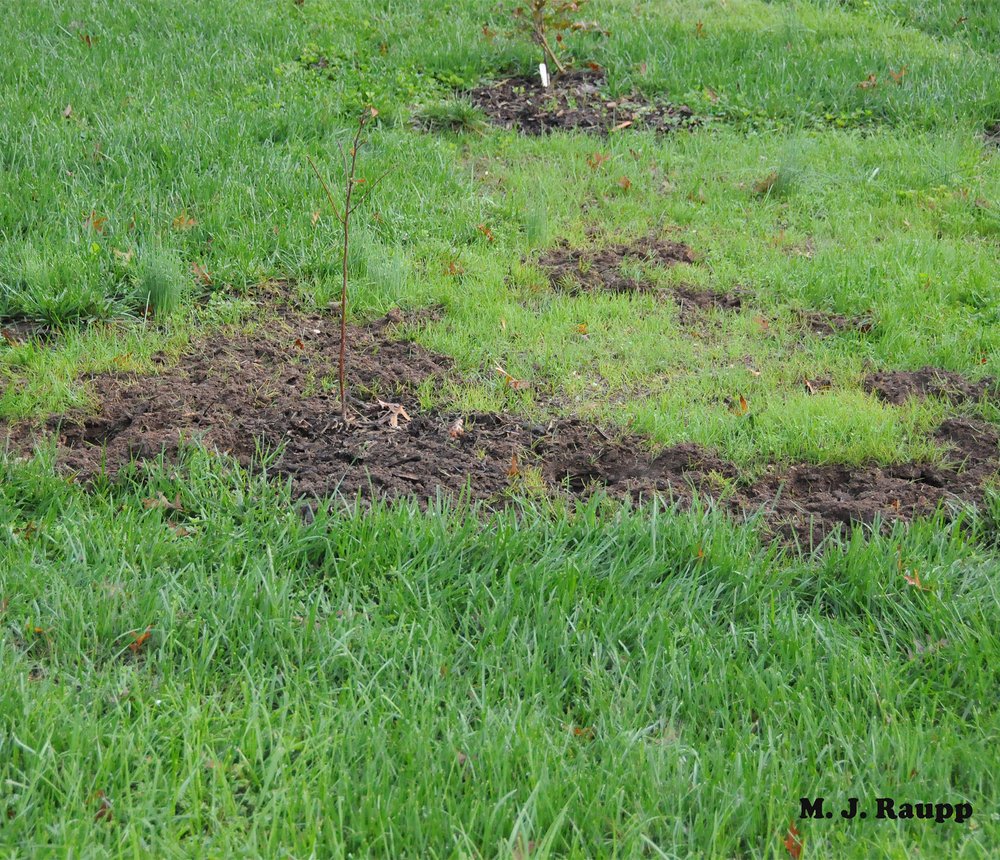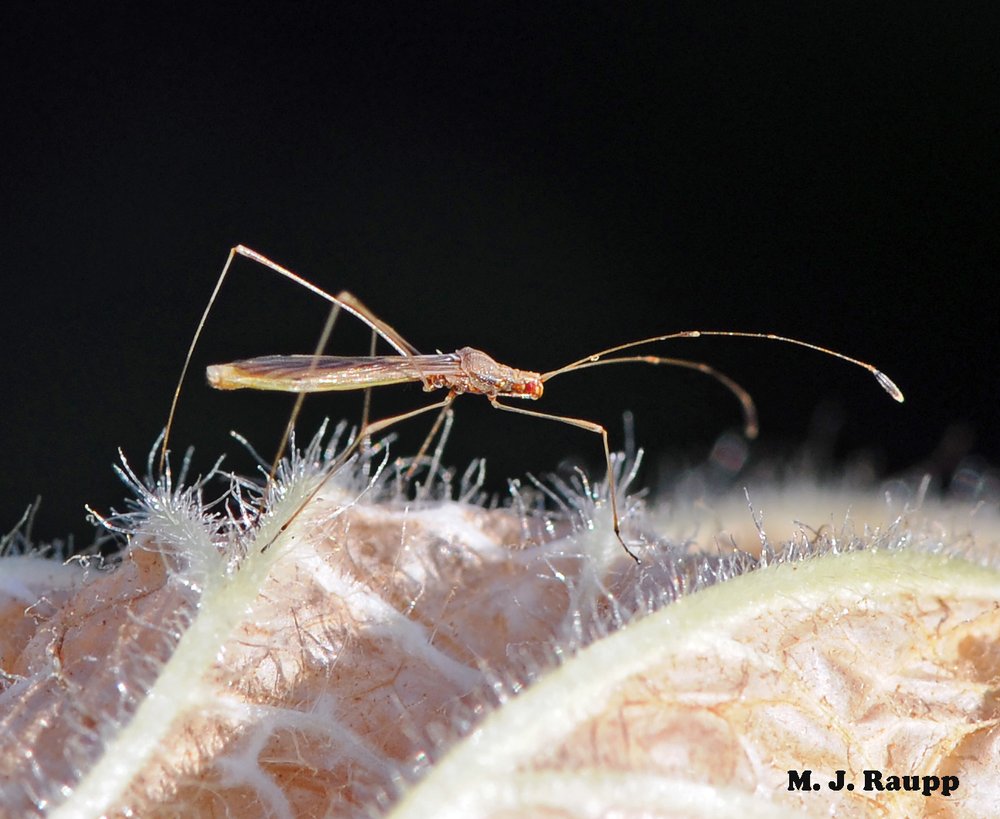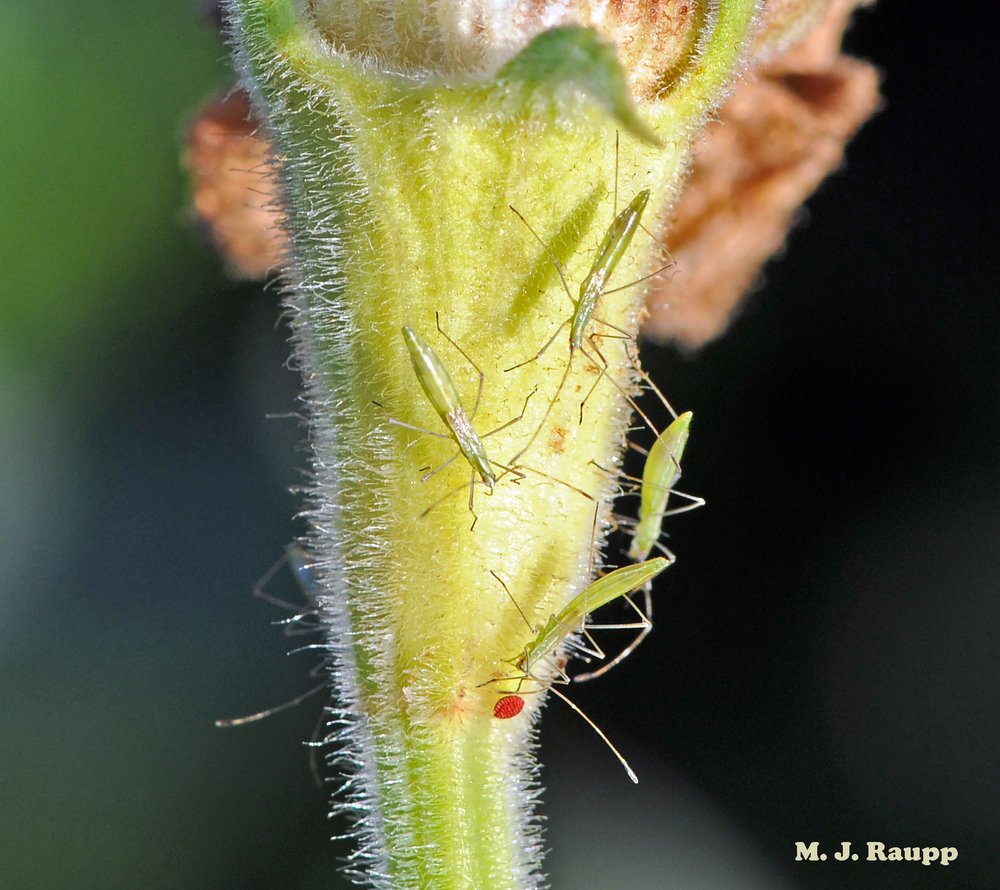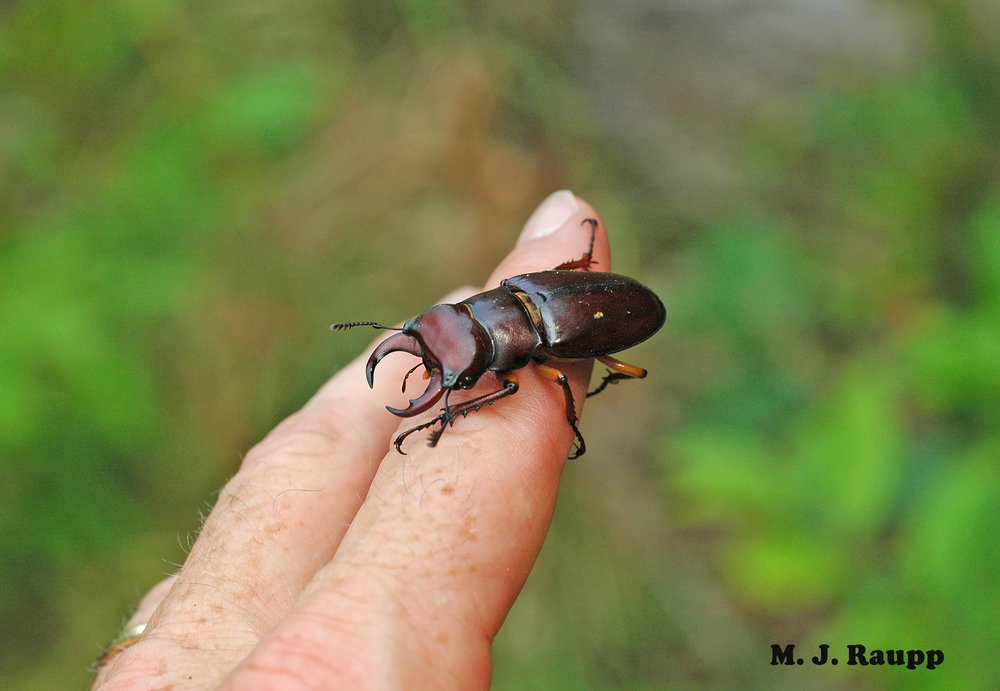
Do the impressive jaws of a male reddish-brown stage beetle strike fear in your heart?

Is the pretty female stag beetle a little less scary than its mate?
Well, we all know what happened to Little Red Riding Hood when she uttered similar words to a big, bad wolf posing as grandma. But fear not, the extremely large jaws of the male reddish-brown stag beetle are used to impress a potential mate, or to battle other males for mating rights to a comely and much smaller-jawed female stag beetle. Stag beetles are relatives of rhinoceros beetles we met in a previous episode. Male rhinoceros beetles, like our indigenous Hercules beetle, use prodigious horns on their head to battle competitors for access to females. Stag beetles dwell in damp forest woodlands (and apparently sometimes in my back yard), where females seek soggy tree holes like the one in my ancient maple or moist rotting stumps on the forest floor. Wet decaying wood serves as the favored location for female beetles to deposit eggs.
Watch as this pretty reddish-brown female stag beetle inspects the soggy interior of a large tree hole in my ancient red maple tree. She was rather nonplused about the camera and stopped a few times to glam for the cam. With some luck, perhaps she will find a mate and grace my rotting tree with a fine batch of lucanid grubs.
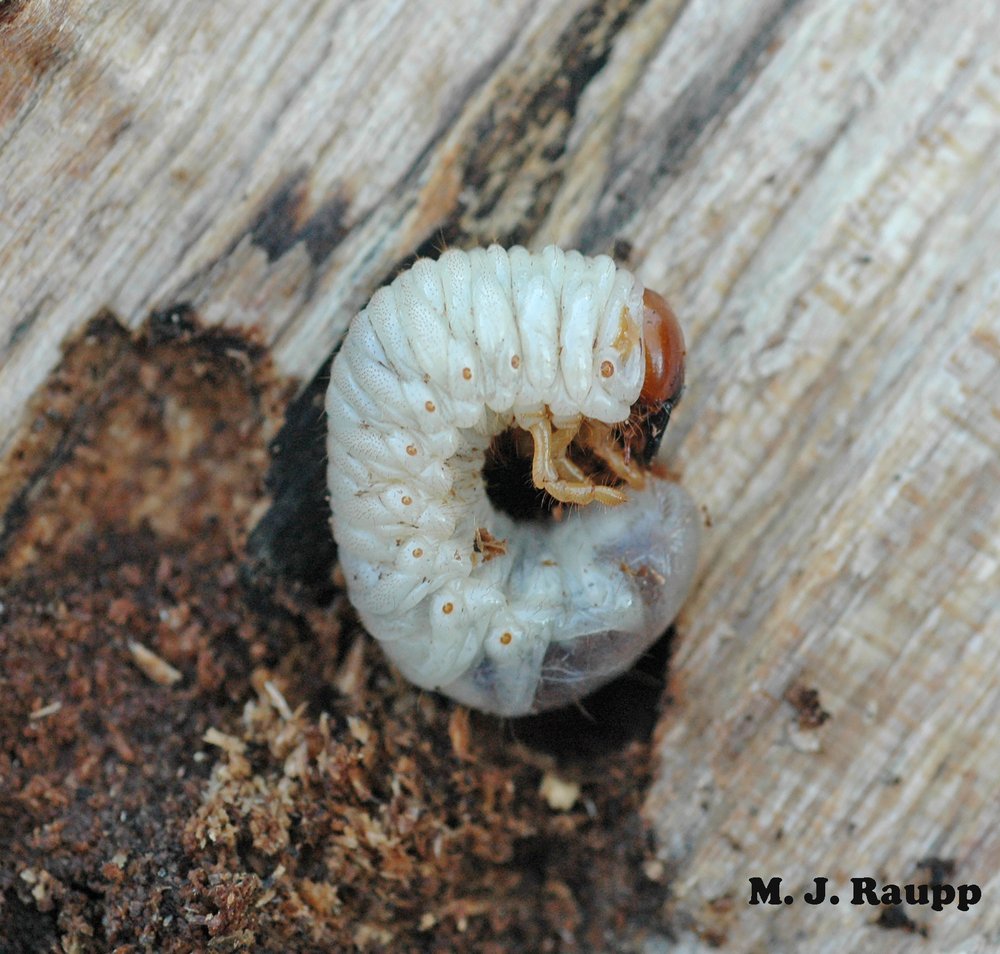
Larvae of stag beetles are quite similar in appearance to this rather large scarab grub.
Larvae, aka grubs, that hatch from these eggs take two years to develop as they feed on lignified tissues of their woody hosts. Stag beetle larvae house a rich microbial community in their gut. These symbionts release nutrients locked in tough woody tissues, making these goodies available to support the growth and development of stag beetle grubs. Along with several other species of wood digesting insects, lucanid larvae play a critical role in recycling organic matter in forests around the world. Adult lucanid beetles are reported to dine on fermenting exudates of plants. The important role of these forest recyclers is imperiled as forested lands disappear. A close relative of our reddish-brown stag beetle, the charismatic Lucanus cervus, has declined dramatically in some parts of Europe.
Stag beetles are noisy, somewhat clumsy fliers and create quite a buzz as they zoom though the forest or zero in on your porch light at nighttime. If you are a bug geek like me, you might just want to hold one of these reddish-brown stag beetles. Worried about those jaws? Don’t be. I have never had any issues holding males or females other than trying to release them when I was finished examining one. They have very sticky claws at the tips of their feet which enable them to climb trees and grip tightly to nosy humans. According to the Maryland Biodiversity Project, July is an excellent month to spot these fascinating creatures here in the DMV. Head for the forest to catch a glimpse of these giants of the beetle world.
Watch this amazing National Geographic video to see how stag beetles use their supersized jaws to defeat competitors and gain access to mates: https://www.youtube.com/watch?v=-VWFreC4onI
Acknowledgements
Bug of the week consulted these references for this episode: “Stag beetles” by Eric P. Benson,“Divergence in Gut Bacterial Community Structure between Male and Female Stag Beetles Odontolabis fallaciosa (Coleoptera, Lucanidae)” by Xia Wan, Yu Jiang, Yuyan Cao, Binghua Sun and Xingjia Xiang, and “Insights into the ecology, genetics and distribution of Lucanus elaphus Fabricius (Coleoptera: Lucanidae), North America's giant stag beetle” by Michael Ulyshen, Louis Zachos, John Stireman, Thomas Sheehan, and Ryan Garrick.


